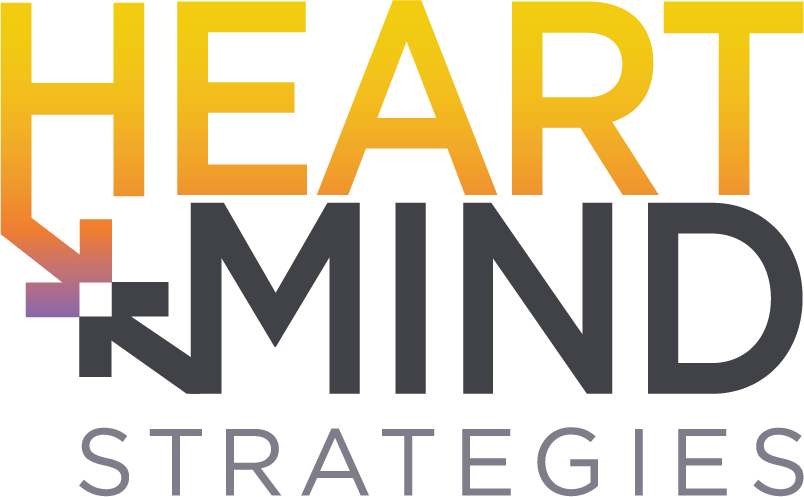By Jennifer Airey (Founding Partner)
Key Takeaways:
- Despite declining enrollment, 88% of U.S. adults with a high school diploma are still considering or pursuing post-secondary education.
- A significant “intention-action gap” exists—many believe in the value of higher education but delay or avoid enrollment due to life stage, finances, or access.
- Men are more likely than women to be in the “considering” phase of higher education, despite lower actual enrollment rates.
- Urban residents are more likely to pursue education beyond high school than those in suburban or rural areas.
- Younger adults (18–34) are less convinced of the value of higher education compared to older age groups, signaling a need for renewed inspiration and relevance.
- This article draws on national survey data and insights from the Indiana Commission for Higher Education’s 2024 study to explore barriers and opportunities in higher ed engagement.
At a time when headlines question the relevance of college, our latest survey of 1,000 U.S. adults tells a more nuanced story: Americans continue to see real value in education after high school. It could be surprising for some to learn that nearly 9 in 10 adults who have at least a high school diploma have either completed, are pursuing, or are actively considering post-secondary education, whether that’s a degree, certificate, or trade program. Far from abandoning learning, many are simply evaluating or delaying their options—and doing so based on life stage, finances, geography, and personal goals.
These data challenge assumptions and offer a fresh lens on how education fits into the lives of adults in the US today.
Still on the Table: A Surprising Number Are Considering Higher Education
Heart+Mind’s national data show only 12% of respondents who have at least a high school diploma say they have ‘never’ considered any form of post-secondary education. That leaves 88% actively engaged in thinking about, participating in, or having already completed post-high school learning (not paid for by an employer)—a compelling counterpoint to assumptions of waning interest.
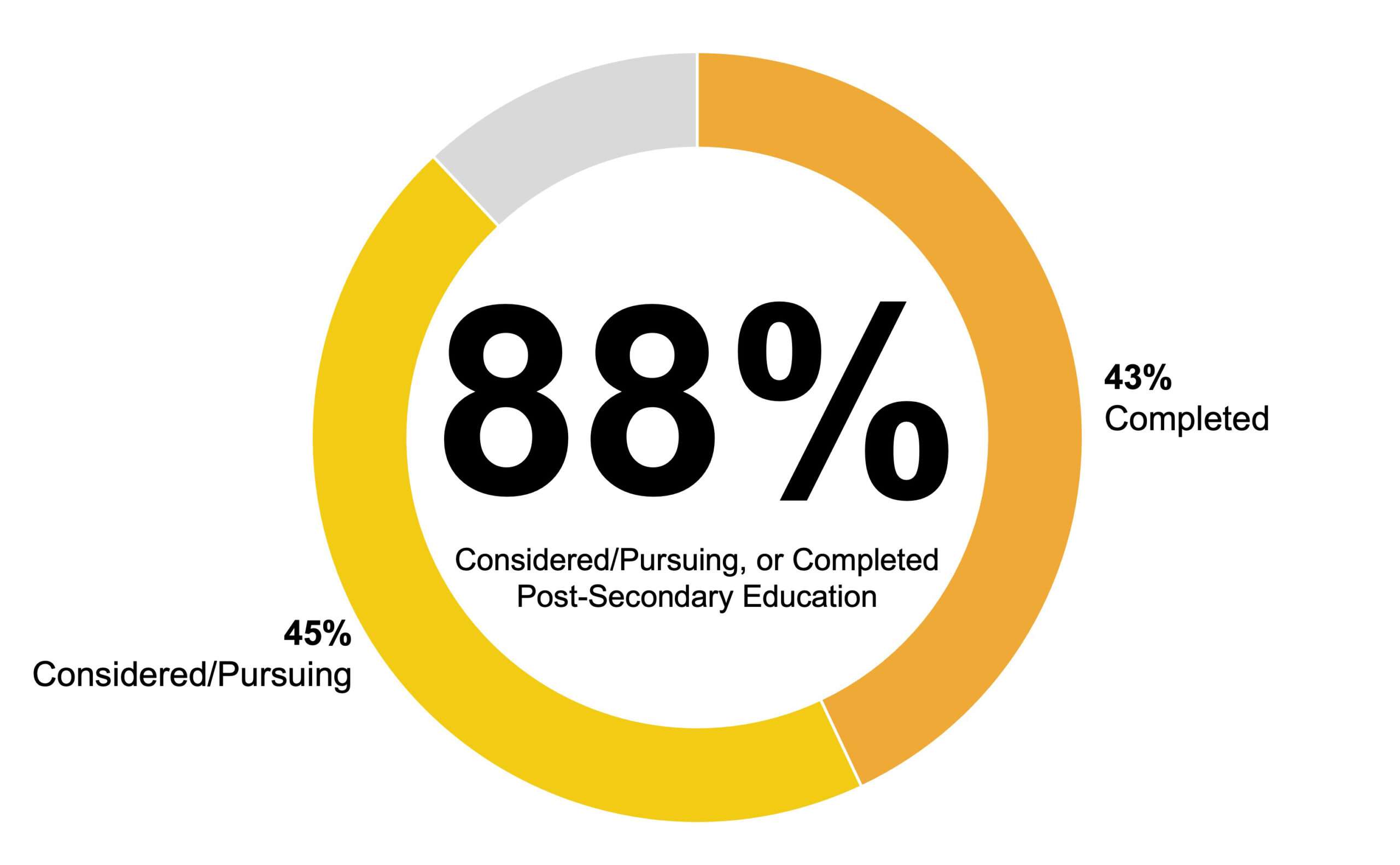
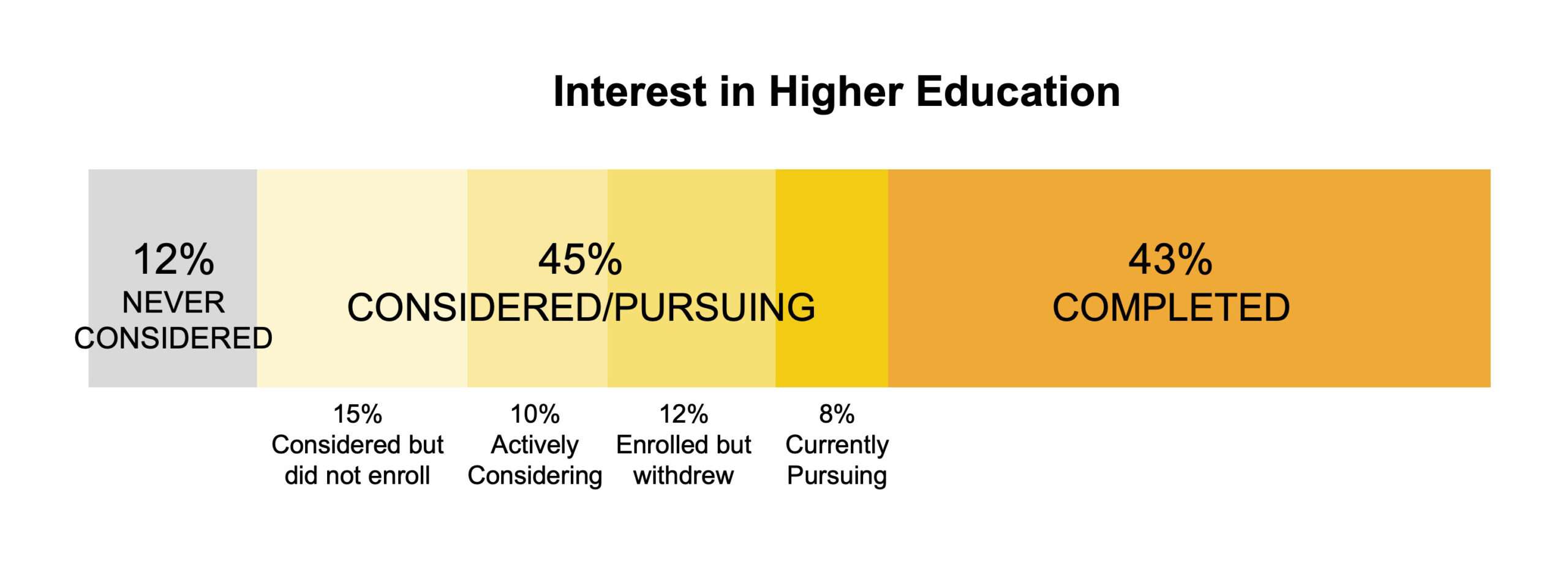
Men are more likely than women to be actively considering, have considered but did not enroll, or withdrawn from education after high school (40% vs. 36%), a figure that widens among those younger (18–34-year-old men 58% vs. 53% for women 18-34). At first glance, this seems counterintuitive given women dominate enrollment. But more women have already made post-secondary decisions, so men are overrepresented in the “considering” segment. These figures help us see that just because men are lower in enrollment does not mean they have shut the door on future possibilities.
NCES’s latest published figures (2023) for annual enrollment in post-secondary institutions show men at 42% to women’s 58%. This gender gap has persisted for the past decade. A “consideration gap” can signal a perceptual shift for how we think about this group and how best to re-engage men with higher ed options.
Geography also plays a role: urban residents (94%) are more likely to explore or have completed educational pathways after high school than their suburban (86%) or rural (85%) counterparts, likely due to better access and more visible options.
The Value is Clear – But Not Yet Contagious
When asked how valuable additional training and education is to their life goals, close to two-thirds (65%) say extremely or very valuable. This belief is particularly strong among adults aged 35–44 (73%) and those aged 45–54 (66%). For younger adults, however, the numbers are lower: 63% of those aged 18–24 and 61% of those 25–34 see higher education as highly valuable. While older adults are increasingly convinced of education’s positive impact, younger generations remain less certain.
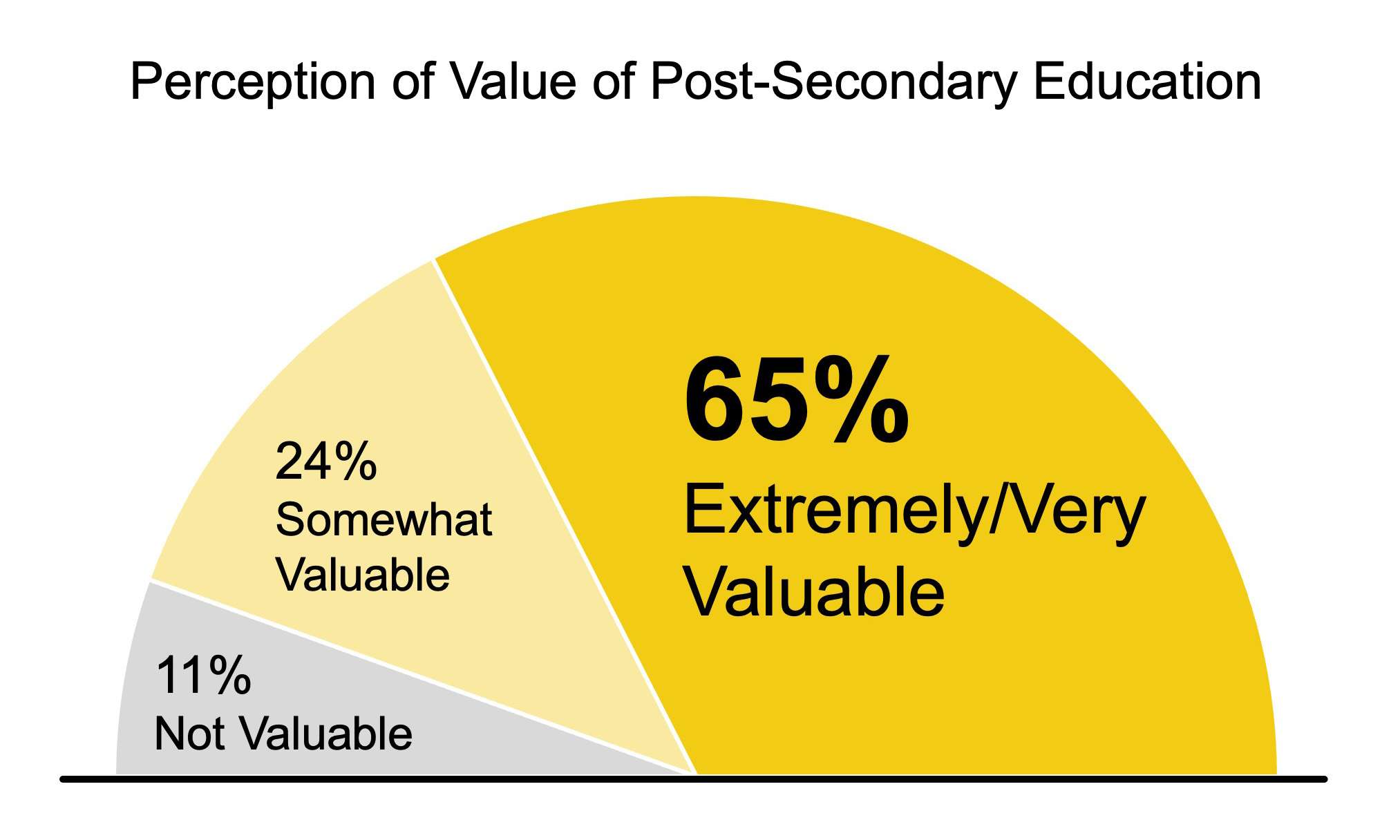
What’s missing for younger adults isn’t ambition—it’s certainty and inspiration. They want to know that education will lead somewhere tangible. Data from various Strada Education Foundation studies show that while most adults believe education improves job outcomes, young people are increasingly unwilling to invest unless they see a clear, direct career return.
The gap between belief and action is especially striking in Indiana. The Indiana Commission for Higher Education’s 2024 Perceptions vs. Realities study found that 80% of high school students and parents say education beyond high school is worth the investment in their future, yet only 53% enroll. That’s a nearly 30-point drop-off between perceived value and actual follow-through, showing aspirations don’t immediately turn into realities.
Nationally, our data show urban residents (68%) are more likely to strongly value education than rural residents (58%), suggesting that local opportunity and access shape perceptions. Unsurprisingly, those who have already pursued higher education are the most likely to see its worth—having experienced its benefits firsthand.
To turn passive belief into action, students need clearer career pathways, real-life role models, and better exposure to post-secondary options starting in middle and high school.
RELATED: Bridging the Gap: New Insights on Higher Education and Workforce Development
They Believe in Higher Education—So Why Aren’t They Going?
While financial elements are a primary challenge for many that stand in the way of pursuing education after high school, additional powerful barriers cut across many aspects of one’s life impacting the ability to make this choice.
Housing costs are a major hurdle, particularly in urban areas where 63% report this as a challenge, compared to 48% in rural areas. These costs squeeze the discretionary income needed to invest in education.
Caregiving demands are most acute for those aged 35–44; 51% report this as a significant challenge to educational next steps, one that goes beyond caring for one’s own children. One-third (32%) of those 18-24 yrs old report caregiving to be somewhat/very much a barrier to pursuing additional training and education after high school. And more than one-third (35%) of parents of 13–24-year-old children report caregiving is a sizeable barrier to that child’s enrollment.
The National Alliance of Caregiving data (2024), as reported in the APA, shows, “65.7 million Americans (or 29 percent of the U.S. adult population involving 31 percent of all U.S. households) served as family caregivers for an ill or disabled relative.”
A sizeable subset of Caregivers is Youth. 2021 data from a Social Policy Report by Armstrong-Carter et al, states, “In the United States, more than 5.4 million children and adolescents under age 18 provide care for family members who are aging or have chronic illness, disability, or other health conditions that require assistance.”
Transportation has become a key logistical barrier, particularly among lower-income individuals and rural residents who lack public transit or flexible scheduling options. This is a solvable structural issue that can impact not only enrollment but also completion, especially for adult learners.
National research from the Bureau of Transportation Statistics and the Urban Institute links transportation barriers to low-income households, and as a contributor to chronic absenteeism.
Personal health—including mental health—is now a top-cited barrier, especially among younger learners. Data reveal a deepening toll from stress, anxiety, and burnout, particularly among those under 35.
According to the most recent Healthy Minds Study (2023-2024), self-reported anxiety among college students hovers around one-third (34%) with 16% severe and 18% moderate.
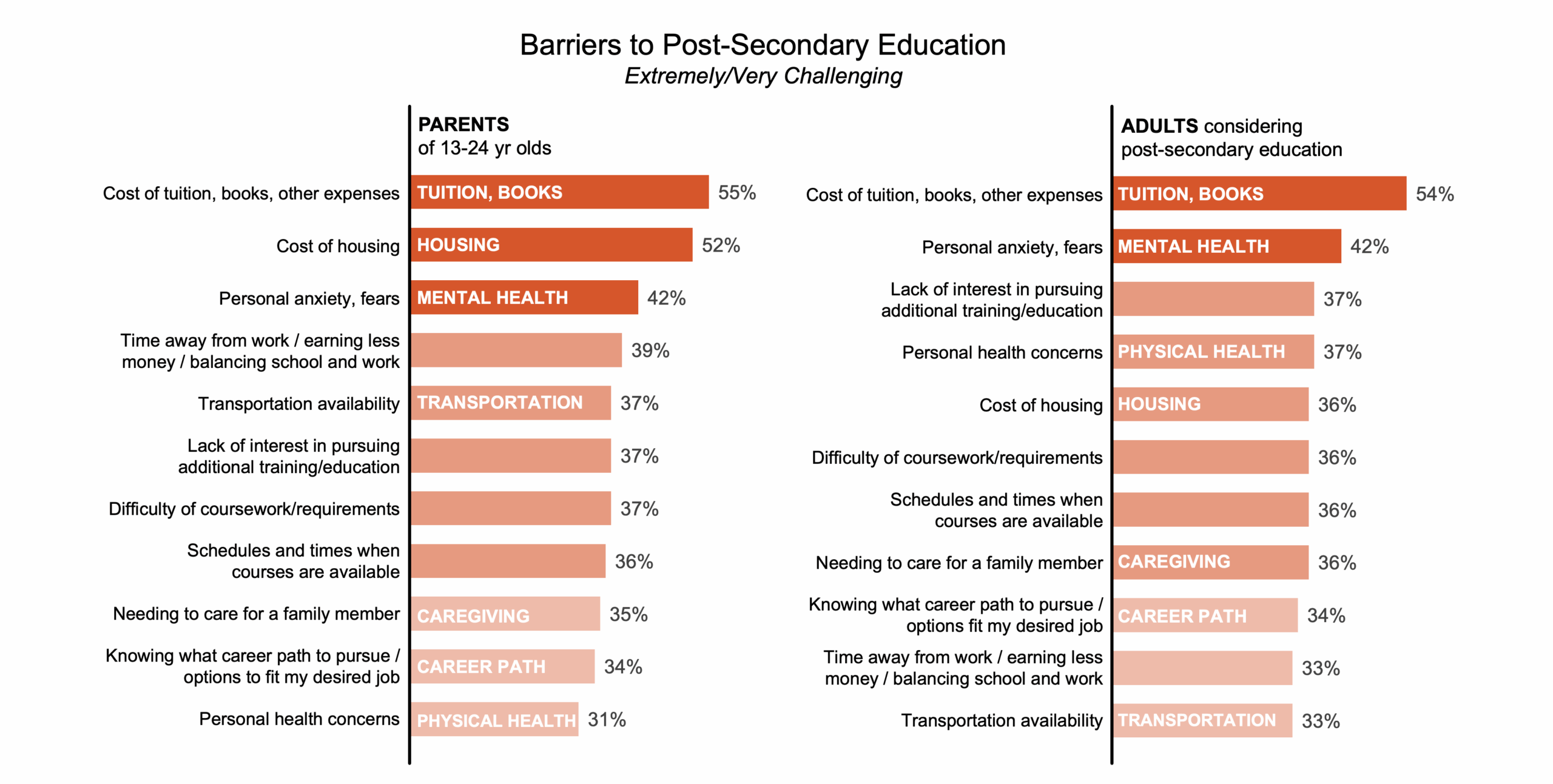
Career Uncertainty Remains a Major Obstacle to Enrollment
Heart+Mind’s national data highlight a compelling point also found in the aforementioned Indiana data (Perceptions and Realities study, Commission of Higher Education): confusion about career direction consistently emerges as a significant barrier.
Many students and parents lack knowledge of career pathways that align with a young person’s interests—and don’t know which training options (degrees, apprenticeships, certification credentials) match those paths. Students and their parents are more likely to consider enrollment without an endgame to be riskier.
The Indiana Commission for Higher Education’s study calls this out directly, noting that young people and their families need better career coaching and career-linked education earlier in the journey. In response, Indiana launched Career Coaching Grants and new high school diploma readiness “seals” in enrollment, employment, and enlistment that will be in full force with the class of 2029.
Research from Gallup/Lumina and Strada supports this finding. In The State of Higher Education 2025, Gallup/Lumina report: “57% of adults not enrolled in a degree or credential program reporting that they have considered enrolling in the past two years; more than eight in 10 among this group say they are likely to enroll within the next five years.” This aligns with a pre-pandemic figure from Strada in 2019 that shows 58% of adults without a degree said they would return to school if they had a clear path to a specific job. But just 1 in 3 said they knew what programs matched their career goals.
CASE STUDY: Reversing Enrollment Decline in Indiana
Reframing the Opportunity: Education Must Be Modular, Flexible, and Guided
The emerging picture is clear: Americans still believe in education—but they need a system that fits the realities of their lives. This includes being:
- Flexible and offering supports to accommodate work, caregiving, and health needs.
- Geographically accessible, especially for those without transportation or in rural communities. If in-person education is what students seek, institutions must consider how to make campuses more accessible.
- Mentally supportive, recognizing the role of stress and mental health in education decisions.
- Career-linked, helping students visualize and pursue paths that align with their ambitions before they enroll; this is critical to get them in the door even if they later decide to change direction, majors, interests, etc.
Conclusion: The Aspiration Persists—Systems Must Evolve to Maximize Enrollment
The data show us a hopeful but urgent message: people still aspire to advance through education—yet need more aligned, accessible, and supportive systems. Closing the gap between perceived value and actual enrollment will require us to remove barriers like transportation, caregiving, managing health issues and career confusion, not just lower cost.
Institutions, employers, and policymakers have a clear opportunity: design and increase access to higher education that reflect real life so those who are at the consideration stage can follow their dreams and ambitions, impacting their own social mobility along with their families, communities and the nation.
Connect with Jennifer Airey to learn more about Heart+Mind’s work with higher education.
Survey Methodology: The survey consisted of 1,000 online interviews conducted April 1-11, 2025. Respondents for this survey were selected from among those who have volunteered to participate in online surveys and polls.
The data (approximately 1000 respondents) is gathered from of one of the largest online panels, which attempts to approximate a cross-section of the US population. To ensure representation of a wide variety of demographic groups we impose quotas by age, gender, and ethnicity based on US Census data for people aged 18 and older.
